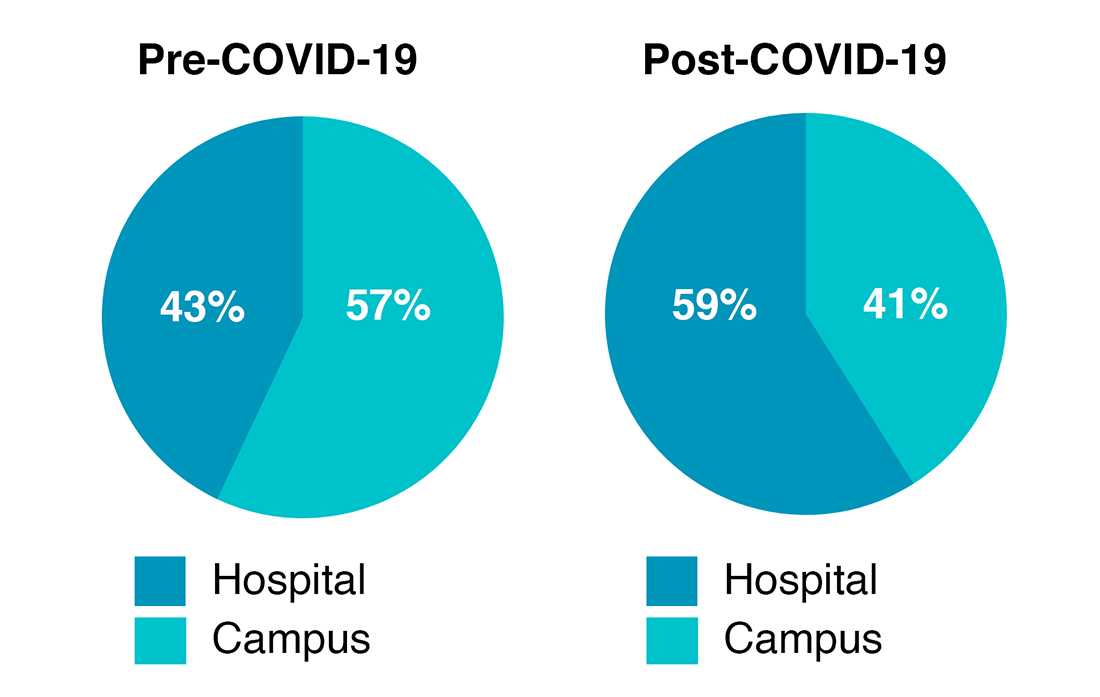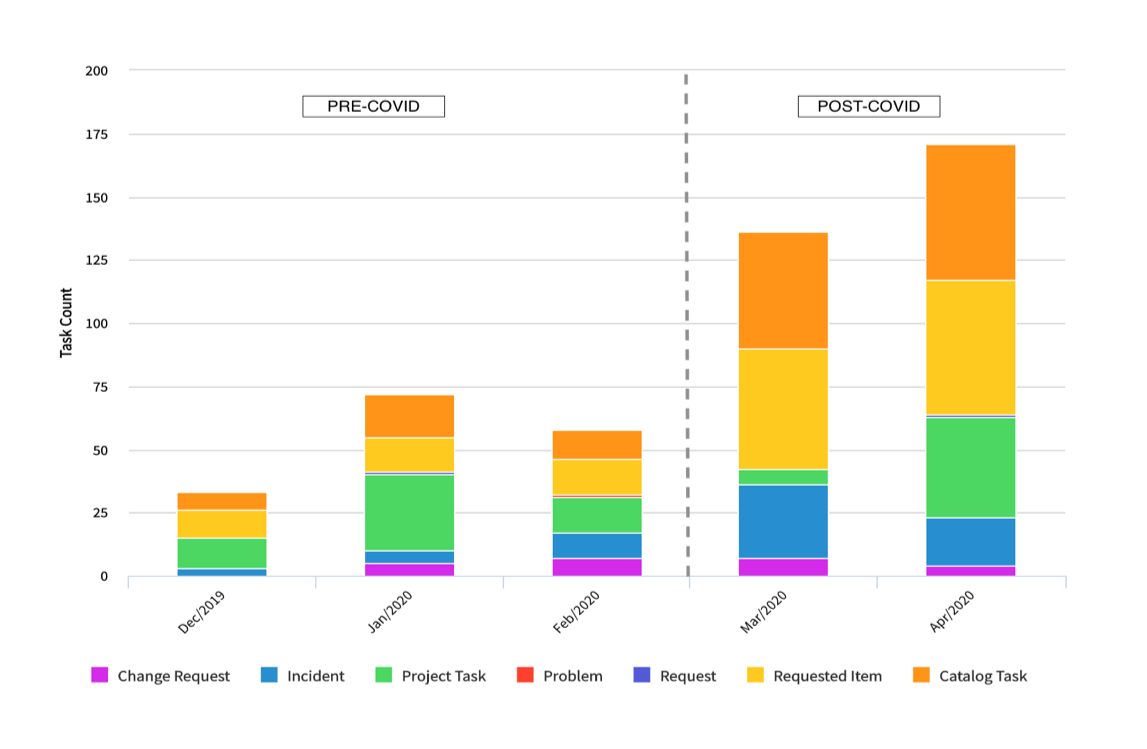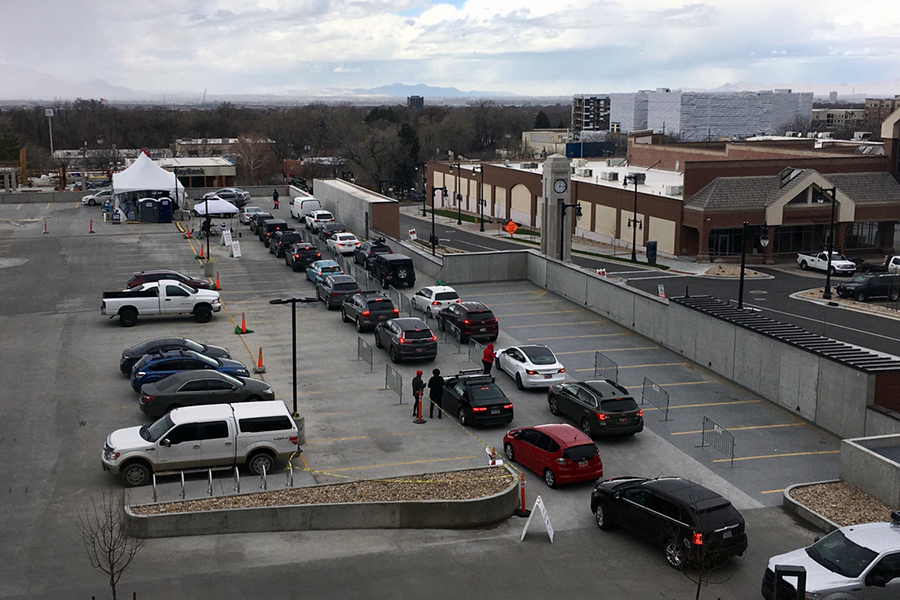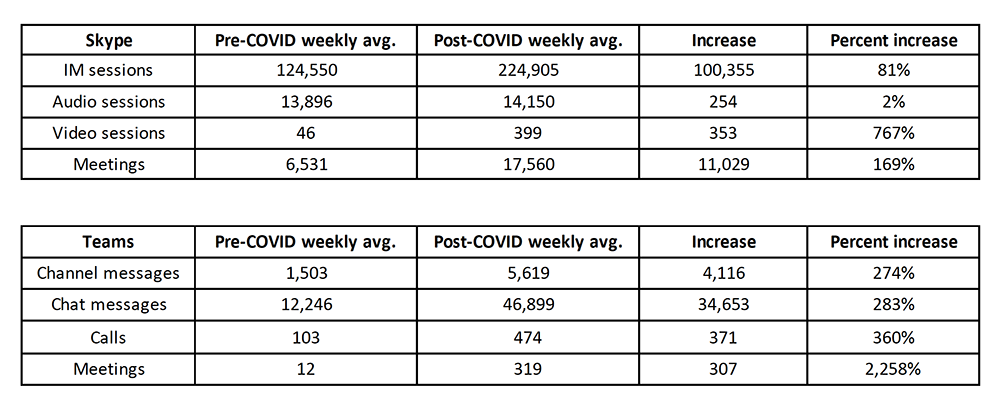You’re accessing archived content
This is archived content from the UIT website. Information may be outdated, and links may no longer function. Please contact stratcomm@it.utah.edu if you have any questions about archived content.
Responding to COVID-19: CTO highlights

Jim Livingston, Chief Technology Officer
I’m beyond proud of how our IT infrastructure teams have worked together to support the University of Utah and University of Utah Health throughout the COVID-19 crisis.
To pull off so much work, without complaint, is an accomplishment that deserves to be recognized. It has been humbling for me to see the commitment these teams have shown during a time of great concern for the health and safety of themselves and their families, and yet, they never stopped working — even with an earthquake and aftershocks thrown into the mix.
The following metrics highlight key efforts that helped ensure a smooth transition to a new way of working, teaching, learning, and caring for our patients. It’s also worth noting that these teams responded to a crisis while ensuring most major IT projects continued to move forward.
Telehealth
- 268 iPads deployed
- 3,000 telemedicine visits daily, on average — and the number continues to grow
- Ticket volumes increased from 307 in February to 894 in March, and 422 in the first 12 days of April
- 308 virtual private network (VPN) clients installed
- Provisioned providers on Telehealth platforms utilizing single sign-on:
- InTouch — 3,484 users and 150 waiting rooms
- Vidyo — 1,071 users and 274 patient rooms
- Zoom — 1,835 users
- MyChart visits increased from 537 in February to 3,158 in March
- Support calls increased from 118 in February to 753 in March, and 560 in the first 12 days of April
- Two Telehealth carts were deployed to the COVID-19 emergency department (ED); one cart was deployed to the regular ED
Network Services
- Installed and configured new Virtual Private Network (VPN) infrastructure that enabled faculty, staff, and students to work remotely
- Added an additional VPN appliance to the existing campus Cisco VPN environment
- Average VPN utilization increased from 600 campus and 400 hospital daily users to 1,600 and 1,200, respectively
- Set up networking infrastructure for 21 COVID-19 tents in Farmington, South Jordan, Sugar House, Park City, and adjacent to the main hospital
- Provided four full-time equivalent (FTE) hours to assist with the UIT Help Desk and ITS Service Desk to meet increased demand
- Ticket processing became more hospital-focused, with more than double the load demand for network services, not including COVID tent setup efforts
Ticket distribution

Opened tasks by month and type

Select to enlarge
Service Management (ServiceNow)
- Created six new web forms to gather COVID-19-related information related to:
- Returning traveler
- Hotline response
- Case reporting
- Building access request
- Request for volunteer support
- Volunteer recruitment (internal and external)
- Created 16 COVID-19 workflow groups and added 52 users to triage requests
- Provided 3 FTE hours to support the ITS Service Desk
Field Services and Asset Management

Traffic at the Sugar House Health Center's in-vehicle COVID-19 testing site (photo courtesy of Jim Livingston)
- Set up the hospital COVID-19 command center in cooperation with other infrastructure teams, which included a mobile teleconference unit, two large panel displays with live news streaming services, and three network ports to assist with live employee forum and management council streams
- Provided hospital administration staff at the command center with in-person IT support
- Provided IT hardware and support at 21 COVID-19 tents
- Provided IT hardware and support to the Wellness Clinic roaming bus for mobile COVID-19 support at the request of the chief wellness officer
- Set up 35 workstations at a new urgent care unit at the hospital
- Provided IT support to combine Surgical Specialty Transplant Unit (SSTU) and Orthopedic Trauma and Specialty Surgery (OTSS) to create a COVID-19 treatment unit
- Reconfigured more than 200 iPads for providers to use during video visits with patients
- Assisted more than 1,000 end users with configuration at home, including preparing more than 300 workstations for off-site home use
- Provided four FTE hours to set up 21 new workstations on the ITS Service Desk
ITS Service Desk
- Answered 5,400 more calls than average in the last two weeks of March
- ITS Service Desk capacity more than doubled in a single day that included setting up and testing 32 new phones to allow for surge support for the university’s COVID-19 hotline, UIT Help Desk, and ITS Service Desk
- Transitioned to a work-from-home model while maintaining service level agreements (SLAs)
- Identified and trained more than 30 staff members to help existing staff help callers with COVID-19 information and support technical questions as the organization as a whole transitioned to a work-from-home model
UIT Help Desk
- Set up 40 additional PCs, which allowed for overflow calls to be taken from the university’s COVID-19 hotline
- Transitioned the UIT Help Desk to a work-from-home model that included upgrading workstations, installing software, and providing training while maintaining SLAs
Biomedical
- Assisted in the equipment setup in 21 COVID-19 tents, and facilitated equipment redeployment in newly-outfitted negative pressure air spaces for COVID-19 patient care
- Inspected and tested more than 60 infrared thermometers for screening staff entering the hospital and clinics
- Actively worked with nursing and medical leadership to accommodate new intensive care units (ICUs) in the hospital in anticipation of an expected surge of COVID-19 patients
- Adjusted schedules to allow for greater on-site coverage and physical distancing
Monitoring and Student University Development Opportunity (sUdo) program
- Provided three weeks of managerial support and oversight to the UIT Help Desk and ITS Service Desk to better support call volume management, documentation, staff onboarding, and moving UIT Help Desk to a work-from-home model
- Provided four Monitoring FTE hours for a week to support an increase in COVID-19 -related calls to the UIT Help Desk and ITS Service Desk
- Provided 2.5 Monitoring FTE hours in support of the UIT Help Desk and ITS Service Desk
- Provided 25 students for a week to support the university’s COVID-19 hotline, UIT Help Desk, and ITS Service Desk
- 2 sUdo leads were assigned to the UIT Help Desk full time
Communications Infrastructure
- Communications infrastructure teams responded to 28 percent more incidents and 50 percent more service requests over previous monthly averages — all while meeting service level targets on 92 percent of all incidents and requests
- The Voice Services team:
- Enabled 1,320 new phone lines related to COVID-19, including 565 soft agents to enable people to work from home and five phone lines to support COVID-19 tents
- Doubled call capacity from 500 to 1,000 paths for IP phones to support increased call volumes
- Account executives conducted 30 phone training sessions for contact centers
- Fiber and cabling teams added infrastructure to support 21 COVID-19 tents
- The UIT Campus Computer Support team loaded 931 VPN clients on staff-owned personal computers to support remote working
- University Television (UTV) upgraded Comcast/Xfinity home users (student cable and IP TV for campus) network connection from 1 GB to 10 GB
- Skype and Teams services provided by UIT’s UMail and Collaboration team saw significant increases in use

Client Engineering
- Configured and supported the deployment, or redeployment, of more than 700 iPads for virtual visits — an 18 percent increase in total mobile devices managed — in less than two weeks
- Application install requests from the software portal increased from 150 per week to 3,000 per week, including, but not exclusive to, many voice applications that support remote work for contact centers
- 178 percent increase of Citrix Gateway sessions from the previous 30 days
- 5 FTE hours to set up COVID-19 tents and support the ITS Service Desk’s increase in call volume
- With little to no impact, maintained the service levels of more than 11,000 Citrix sessions, 12,000 end-user devices, 5,000 printers, and approximately 5,000 mobile devices
Hardware Platform Services
- Deployed more than 80 new server blades to handle increased demand from server clusters, including UMail and Citrix, due to additional COVID-19 load and regular growth
- Created storage shares for COVID-19-related data, and helped support and educate users
- Provided 1 FTE hour to support the ITS Service Desk due to increased call volume
Software Platform Services
- Deployed a new network video recorder (NVR) server for live patient video streaming for the hospital in cooperation with UIT teams (Facilities IT, Network Operations Center, etc.) and the Facilities department
- Deployed a new multitier web application environment to support the COVID-19 research efforts of the Office of Research Integrity and Compliance
- Pushed out approximately 10 COVID-19-related Epic updates
- Provided 5.5 FTE hours to assist with UIT Help Desk and ITS Service Desk
IT Product Management and Enterprise Architecture
- Wrote 18 help articles, created 3 how-to videos, and contributed to a Remote Resources Guide to help remote workers and students connect to the internet, install telephones, and use conferencing software.
Node 4
Our monthly newsletter includes news from UIT and other campus/ University of Utah Health IT organizations, features about UIT employees, IT governance news, and various announcements and updates.
